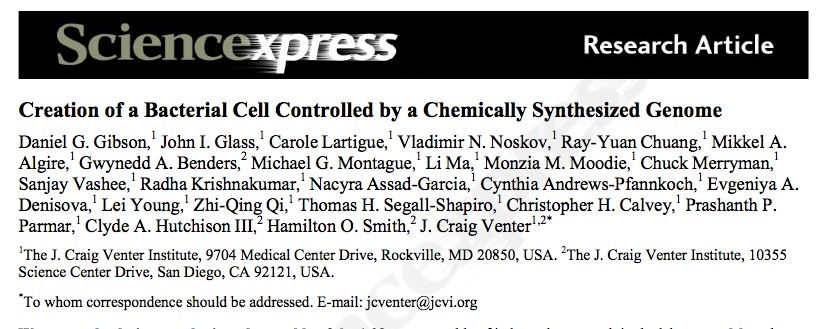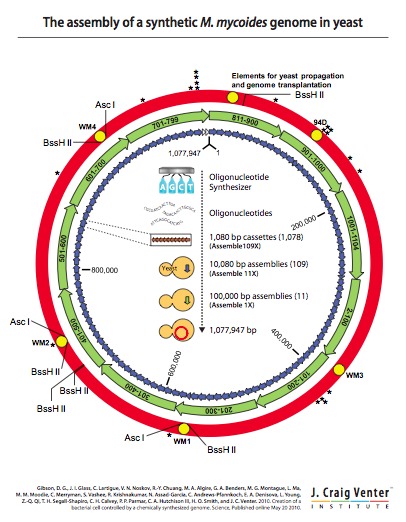
We report the design, synthesis and assembly of the 1.08- Mbp Mycoplasma mycoides JCVI-syn1.0 genome starting from digitized genome sequence information and its transplantation into a Mycoplasma capricolum recipient cell to create new Mycoplasma mycoides cells that are controlled only by the synthetic chromosome. The only DNA in the cells is the designed synthetic DNA sequence, including “watermark” sequences and other designed gene deletions and polymorphisms, and mutations acquired during the building process. The new cells have expected phenotypic properties and are capable of continuous self-replication.
One year after synthesizing a synthetic genome, the Craig Venter Center finally published their results in Science. For this paper, Science has kindly allowed free access.
Of course this created alot of discussion amongst the scientific circle. Even President Obama penned a letter to the research team.
In the basic criteria of what life is like, most scientists agree that three basic components has to exist: a container, a way to harvest energy and an information carrier like RNA or another nucleic acid.
This is a step from similar protocellular work by Szostak from Havard Medical School. The Craig Venter Center team's bacteria can grow and divide.
Reading list suggested by Carl Zimmer.

No comments:
Post a Comment